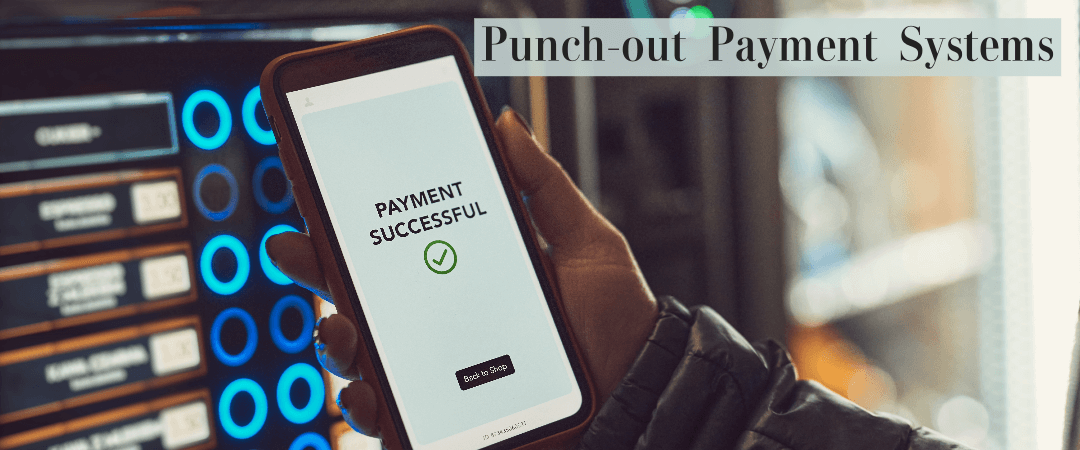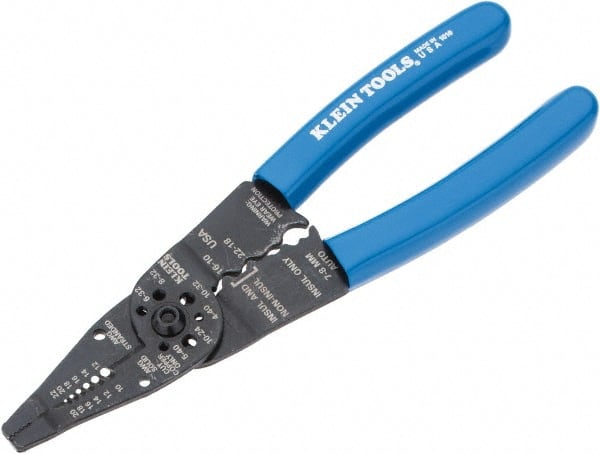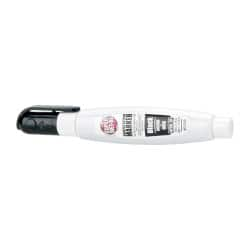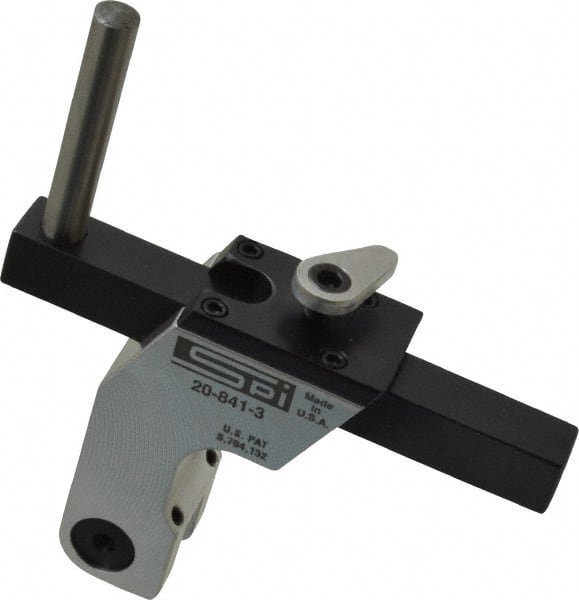Punch-out Payment Systems: A Comprehensive Guide

Introduction to Punch-out Systems
Punch-out systems, also known as e-procurement or punch-out catalogs, are integrated electronic systems that enable buyers to access a supplier's web catalog from within their own procurement system. These systems make purchasing more streamlined, efficient, and tailored to specific organizational needs.
Section I: Reasons Customers Choose Punch-Outs
Customers often prefer punch-out systems as a way to facilitate payments for several reasons, including Simplified Purchasing Process (Direct integration with suppliers' catalogs enables a more straightforward purchasing experience), Real-time Pricing and Availability (Immediate access to updated information ensures accurate and timely transactions), Enhanced Compliance (Ensures adherence to organizational purchasing policies and regulations), and more. This section provides additional details and reasons why customers choose Punch-Out as their payment method of choice.
1. Simplified Purchasing Process:
Punch-out systems eliminate the need to navigate various supplier websites, thus simplifying the purchasing process. By integrating directly with suppliers' catalogs, users can browse, compare, and purchase products within their own procurement system. This seamless experience not only reduces the time spent on procurement but also minimizes the chances of errors that might occur when manually transferring information between systems. The streamlined approach enhances the overall efficiency and satisfaction of the purchasing process.
2. Real-time Pricing and Availability:
With punch-out systems, buyers have immediate access to real-time information regarding pricing, discounts, and product availability. This dynamic update ensures that the buyers are always aware of the current market situation. Such real-time insights eliminate surprises and enable more informed purchasing decisions, leading to potential cost savings. Buyers can take advantage of special offers and avoid out-of-stock situations that might delay essential purchases.
3. Enhanced Compliance:
Punch-out systems allow organizations to enforce purchasing policies and regulations more effectively. By restricting access to approved products and suppliers, the system ensures that all purchases are in line with the company’s guidelines. This standardization minimizes the risk of non-compliance and maintains a consistent approach across different departments or branches of the organization. It also provides a clear audit trail, making it easier to track, analyze, and report on purchasing activities.
4. Customized Shopping Experience:
Unlike standard catalogs, punch-out systems can be customized to match the specific needs and preferences of the buyer. Whether it's highlighting preferred products, setting spending limits, or configuring unique workflows, punch-out catalogs offer a tailored shopping experience. This customization not only increases user satisfaction but also aligns with the organization's strategic procurement goals.
5. Improved Relationship with Suppliers:
Punch-out systems foster a closer collaboration between buyers and suppliers. By allowing for direct integration, the systems enable a more transparent and responsive relationship. Both parties have a clearer understanding of needs, expectations, and performance. This improved communication can lead to better negotiation, long-term agreements, and a more stable supply chain.
6. Scalability and Flexibility:
As organizations grow, so do their procurement needs. Punch-out systems offer the scalability and flexibility needed to adapt to changing requirements. Whether it's adding new suppliers, integrating with different procurement platforms, or adjusting to new industry regulations, punch-out systems are designed to evolve with the organization. This adaptability ensures that the system remains a valuable asset in the long term.
Summary:
The adoption of punch-out systems represents a significant shift in modern procurement practices. By offering a more straightforward purchasing experience, real-time updates, enhanced compliance, customization, improved supplier relationships, and scalability, punch-out systems are rapidly becoming the preferred choice for organizations of various sizes and industries. Whether it's a small business looking to optimize its buying process or a large corporation seeking to standardize procurement across multiple locations, punch-out systems provide a compelling solution that aligns with contemporary business needs.
Section II: Benefits of Implementing Punch-Out Payment Systems
Implementing a punch-out system is a strategic move that offers a multitude of advantages to businesses of all sizes, including Streamlined Procurement (Improves efficiency by centralizing all purchasing activities), Cost Savings (Reduces administrative expenses and often leads to better pricing), Customization (Can be tailored to suit the specific needs and policies of an organization), Integration with Existing Systems (Seamlessly connects with existing procurement systems, avoiding compatibility issues0, and more. Let's explore these benefits in detail:
1. Streamlined Procurement:
Punch-out systems centralize all purchasing activities, creating a one-stop shop for procurement needs. This centralization helps in eliminating redundant processes, reducing paperwork, and enhancing the user experience. By connecting directly to suppliers' catalogs, it becomes easier to compare products, manage orders, and track shipments—all within a single interface. The automation of repetitive tasks allows procurement teams to focus on strategic activities, further improving efficiency and productivity.
2. Cost Savings:
Punch-out systems offer significant cost savings by reducing administrative expenses. The automation of various purchasing processes, such as order placement and invoice management, minimizes manual efforts and associated labor costs. Additionally, real-time access to suppliers' pricing and special offers allows for more informed purchasing decisions, often leading to better pricing and negotiations. Cumulatively, these factors contribute to substantial cost reductions that positively impact the bottom line.
3. Customization:
One of the standout features of punch-out systems is their ability to be tailored to suit the specific needs and policies of an organization. Businesses can configure the system to align with their purchasing guidelines, approval workflows, and budget constraints. Whether it's setting up preferred suppliers, creating customized catalogs, or establishing spending thresholds, the system can be molded to reflect the unique characteristics of each organization. This tailored approach enhances user engagement and ensures alignment with strategic procurement goals.
4. Integration with Existing Systems:
Punch-out systems are designed to seamlessly integrate with existing procurement systems, such as Enterprise Resource Planning (ERP) and e-procurement platforms. This seamless connection ensures a smooth flow of information between various parts of the organization, such as finance, inventory management, and supply chain. The interoperability reduces the chances of data inconsistency and duplication, further enhancing efficiency. By building upon existing infrastructure, businesses can leverage their current investments while embracing new technological advancements.
5. Enhanced Supplier Collaboration:
Punch-out systems enable a deeper collaboration with suppliers by providing a platform that facilitates real-time communication and data exchange. Suppliers can update product information, pricing, and availability directly within the system, ensuring that buyers always have access to the latest information. This transparent interaction fosters better relationships, encourages joint problem-solving, and often leads to more favorable contract terms and conditions.
6. Improved Data Analytics and Reporting:
With all procurement activities consolidated within a punch-out system, businesses have access to a wealth of data that can be analyzed to gain insights into purchasing patterns, supplier performance, and compliance. Robust reporting tools can help organizations identify opportunities for cost savings, negotiate better contracts, and make data-driven decisions that align with their strategic goals.
7. Increased Compliance and Control:
Punch-out systems enforce compliance by restricting access to approved products and suppliers, automatically applying discounts, and following predefined approval workflows. This control ensures that purchases are consistent with organizational policies and regulatory requirements. The clear audit trail also simplifies the tracking and reporting process, making it easier to demonstrate compliance during audits and reviews.
8. Scalability:
As businesses grow and evolve, their procurement needs change. Punch-out systems offer the flexibility and scalability to adapt to these changes without significant reconfiguration. Whether it’s expanding to new locations, adding new product lines, or integrating with emerging technologies, punch-out systems are designed to scale with the organization, ensuring long-term viability.
Summary:
The implementation of punch-out payment systems represents a transformative approach to procurement. By streamlining processes, reducing costs, enabling customization, integrating with existing systems, enhancing supplier collaboration, improving analytics, increasing compliance, and offering scalability, these systems are revolutionizing how organizations manage their purchasing activities. As businesses continue to seek innovative solutions to optimize their operations, punch-out systems stand out as a compelling choice that aligns with modern business dynamics and sets the stage for future growth and success.
Section III: Implementation Steps
Implementing a punch-out system is a complex task that requires careful Planning & Assessment (Evaluate the current procurement process and identify the need for a punch-out system.), Selection of Platform (Choose the appropriate punch-out platform or technology that fits the organizational needs), Integration (Collaborate with the supplier to integrate the system), Testing (Perform rigorous testing to ensure functionality), Training (Train staff members to use the new system effectively), Launch (Implement the system organization-wide), and more.. Below, we'll explore each step in detail to provide a comprehensive guide for successful implementation:
1. Assessment:
The first step involves evaluating the current procurement process to identify the specific needs, challenges, and objectives that a punch-out system can address. This assessment should involve key stakeholders from procurement, IT, finance, and other relevant departments. Together, they will analyze the existing workflow, determine the requirements, set goals, and develop a clear roadmap for implementation. Considerations might include compliance requirements, customization needs, scalability considerations, and budget constraints.
2. Selection of Platform:
Choosing the right punch-out platform or technology is crucial for success. This selection must align with the organizational needs identified during the assessment phase. Businesses should explore different options, considering factors such as compatibility with existing systems, customization capabilities, supplier networks, user interface, and support services. Engaging with vendors, conducting demos, and seeking references can help in making an informed decision that best suits the organization.
3. Integration:
Integration involves collaborating with the chosen supplier to connect the punch-out system with existing procurement and back-end systems. This step requires technical expertise to ensure seamless data flow between the platforms, maintaining the integrity and consistency of information. The integration phase may include configuring product catalogs, setting up authentication protocols, aligning workflows, and ensuring security measures are in place. Close collaboration with the supplier ensures that specific organizational needs are addressed during this phase.
4. Testing:
Rigorous testing is essential to ensure that the punch-out system functions as intended. This includes testing the integration with existing systems, the user interface, compliance controls, data exchange, and overall performance. Multiple testing cycles may be required to identify and address any issues, ensuring that the system meets the defined requirements and standards. Engaging end-users in testing can provide valuable feedback and help in identifying potential usability challenges.
5. Training:
Effective training is vital for ensuring that staff members are equipped to use the new punch-out system efficiently. This training should be tailored to different user roles and responsibilities, covering topics such as navigation, order placement, approval workflows, reporting, and troubleshooting. Providing hands-on experience, user guides, and ongoing support helps in building confidence and ensuring a smooth transition to the new system. Encouraging feedback during training can further enhance the user experience and facilitate necessary adjustments.
6. Launch:
The launch phase involves rolling out the punch-out system organization-wide. This step should be carefully planned and communicated to ensure that all users are aware of the transition and have the necessary resources to engage with the new system. A phased approach may be considered to allow for any last-minute adjustments and to provide ongoing support as users adapt to the new system. Monitoring the launch and gathering feedback helps in identifying areas for improvement and ensuring success.
7. Continuous Improvement and Support:
Implementation does not end with the launch. Continuous monitoring, support, and improvement are essential to maximize the benefits of the punch-out system. Regular reviews, updates, user feedback, and performance analytics contribute to identifying opportunities for further enhancement, ensuring that the system continues to align with evolving organizational needs. Establishing a clear support structure and engaging with suppliers for ongoing collaboration fosters long-term success.
Summary:
The implementation of a punch-out system is a strategic initiative that requires meticulous planning, selection, integration, testing, training, and launch. By following these comprehensive steps, organizations can ensure a successful implementation that leverages the full potential of punch-out technology. The journey towards implementing a punch-out system offers the promise of streamlined procurement, cost savings, and enhanced collaboration. It sets the stage for a more agile, efficient, and effective procurement process that aligns with modern business demands and paves the way for future growth and innovation.
Section IV: Risks and Potential Disadvantages
Implementing a punch-out system, while laden with benefits, is not without risks and potential disadvantages. It is essential to understand and address these challenges to make an informed decision. Considerations include Complex Implementation (Requires technical expertise and can be time-consuming), Potential Security Concerns (If not handled properly, there might be security vulnerabilities), Costs (Upfront investment might be significant, especially for smaller organizations), and more. Here’s a comprehensive look:
1. Complex Implementation:
- Technical Challenges: Implementing a punch-out system requires specialized technical expertise. Integrating with existing systems, customizing to suit specific needs, and ensuring seamless data flow can be complex tasks.
- Time-Consuming: Depending on the organizational needs and the chosen platform, the implementation process might take longer than expected. Delays can result from unforeseen challenges, vendor coordination, testing, and refinements.
- Resource Intensive: The need for skilled technical resources can strain smaller organizations or those without in-house expertise. Collaborating with vendors and possibly hiring or outsourcing technical roles can add to the complexity.
2. Potential Security Concerns:
- Vulnerabilities: If not implemented with stringent security measures, punch-out systems might expose sensitive data to potential risks. This includes information related to products, pricing, customers, and transactions.
- Compliance Issues: Adhering to regulatory requirements related to data protection and privacy is crucial. Non-compliance might lead to legal challenges and reputational damage.
- Dependence on Suppliers: Working closely with suppliers to ensure security alignment is vital. Any lapse on their part might impact the overall system security.
3. Costs:
- Upfront Investment: The initial cost of implementing a punch-out system might be significant, especially for smaller organizations. This includes the purchase of the platform, integration, customization, and training expenses.
- Ongoing Maintenance: Beyond the initial setup, there are ongoing costs related to maintenance, updates, support, and possibly subscription fees for the platform.
- Unexpected Costs: Unforeseen challenges during implementation, changes in requirements, or additional customization might lead to cost overruns.
4. Organizational Alignment and User Adoption:
- Resistance to Change: Employees might resist the transition to a new system, impacting user adoption and effectiveness.
- Training Challenges: Adequate training is essential for success. Inadequate training might lead to confusion, errors, and dissatisfaction among users.
- Misalignment with Business Goals: If not aligned with organizational strategies and goals, the system might fail to deliver the expected benefits, leading to disillusionment.
5. Dependency on Vendor Support:
- Vendor Reliability: Choosing the right vendor is crucial. Dependency on a vendor that fails to provide adequate support, timely updates, or fails to align with business needs can lead to challenges.
- Limited Flexibility: Some platforms might offer limited flexibility for customization or integration, restricting the ability to adapt to evolving organizational needs.
Summary:
Implementing a punch-out system, though advantageous, comes with inherent risks and potential disadvantages that organizations must carefully consider. Complex implementation, security concerns, significant costs, organizational alignment, user adoption, and dependency on vendor support are critical areas to evaluate. By understanding these challenges, planning accordingly, and engaging with trusted vendors, organizations can mitigate these risks and make informed decisions that align with their unique needs and objectives. The path to punch-out implementation is nuanced, and a well-considered approach will contribute to achieving the desired success and efficiency.
Section V: Alternatives
Section V: Alternatives to Punch-Out Systems
While punch-out systems offer a streamlined procurement experience, they may not be suitable for all organizations. Some businesses may find the implementation too complex, costly, or not aligned with their specific needs. Fortunately, there are several alternative approaches to procurement that organizations can consider. Customers who prefer not to implement a punch-out system can opt for Standard Online Catalogs (Browse and purchase items directly from suppliers' websites), Manual Ordering Process (Traditional methods like phone or email orders), Third-party Procurement Platforms (Utilizing existing platforms that handle the procurement process), and more. Here's a view into those alternatives:
1. Standard Online Catalogs:
- Description: Customers browse and purchase items directly from suppliers' websites using standard online catalogs. These are readily accessible, easy-to-use interfaces that provide detailed product information.
- Pros:
- Ease of Use: Simple to navigate without specialized training or tools.
- No Special Integration Required: No need for complex integration with existing systems.
- Wider Selection: Customers can access various suppliers without restrictions.
- Cons:
- Lack of Customization: Cannot be tailored to organizational policies or workflows.
- Limited Compliance Controls: May not provide specific compliance or approval mechanisms.
2. Manual Ordering Process:
- Description: Traditional methods of procurement like phone, email, fax, or even in-person orders.
- Pros:
- Personalized Interaction: Direct contact with suppliers can enable negotiations and custom arrangements.
- Low Tech Requirements: No need for specialized software or integration.
- Cons:
- Time-Consuming: Manual processes can be slow and prone to errors.
- Limited Tracking and Reporting: Challenges in tracking orders, history, and reporting.
3. Third-Party Procurement Platforms:
- Description: Utilizing existing third-party platforms that handle the entire procurement process, often providing a marketplace of multiple suppliers.
- Pros:
- Integration Options: May offer integration with existing systems.
- Multiple Suppliers in One Place: Access to various suppliers within a single platform.
- Features and Support: Often include additional features like reporting, approval workflows, and customer support.
- Cons:
- Subscription Costs: May require ongoing subscription fees.
- Dependence on Platform: The platform's stability, updates, and support are out of the organization's control.
4. Hybrid Approaches:
- Description: A combination of online catalogs, manual processes, and third-party platforms, tailored to suit specific organizational needs.
- Pros:
- Flexibility: Adaptable to different needs and challenges.
- Leverages Existing Tools: Can incorporate existing tools, relationships, and processes.
- Cons:
- Complexity: May require careful planning and management to ensure consistency and efficiency.
5. In-House Procurement Solutions:
- Description: Developing or customizing in-house procurement solutions aligned with specific business requirements.
- Pros:
- Tailored to Needs: Can be designed to meet the exact requirements of the organization.
- Full Control: Complete control over features, updates, and security.
- Cons:
- High Initial Costs: Development and customization can be expensive.
- Maintenance Responsibility: Ongoing responsibility for updates, support, and compliance.
Summary:
The decision to implement a punch-out system or opt for alternatives depends on various factors, including organizational size, needs, resources, budget, and preferences. Alternatives such as standard online catalogs, manual ordering, third-party platforms, hybrid approaches, and in-house solutions provide a range of options that cater to different procurement strategies. Understanding the pros and cons of each alternative and aligning them with organizational objectives ensures a procurement approach that is both effective and efficient. The landscape of procurement is diverse, and a well-considered strategy can pave the way for successful supplier relationships and operational excellence.
Section VI: Choosing GoVets as a Supplier
Customers often choose GoVets for the following reasons, including our Quality Products (Wide range of office supplies, furniture, electronics, industrial tools, and more), Flexible Payment Options (GoVets offers numerous payment alternatives, including the ability to support Punch-out systems), Social Responsibility (A portion of each sale contributes to veteran non-profit causes), Trustworthiness (GoVets is a BBB-Accredited Business and a VA-Verified Serviced-Disabled Veteran-Owned Small Business (SDVOSB)), and more. When it comes to procurement solutions such as Punch-Out systems, EDI, API, or other integrations, customers seek a reliable partner who can guarantee quality products and flexible payment options, coupled with social responsibility and trustworthiness. This is where GoVets stands out. Here's why:
1. Quality Products:
- Wide Range of Offerings: From office supplies, furniture, electronics to industrial tools and equipment, GoVets provides millions of products.
- Comprehensive Solutions: GoVets caters to various customers, including government buyers, small to medium-size businesses, enterprises, academic institutions, and patriotic consumers.
2. Flexible Payment Options and Seamless Implementations:
- Punch-Out Systems Support: GoVets understands the value of seamless integration and offers full support for Punch-Out systems.
- EDI, API, and Other Integrations:
- Customized Solutions: GoVets works closely with customers to understand their unique requirements, ensuring that the implementation is tailored to suit their needs.
- Collaborative Approach: From assessment, selection of platform, integration, testing, training, to launch, GoVets partners with the customer throughout the entire process.
- Fully Hardened Solutions: The focus is on delivering a system that is fully hardened and works perfectly from day one. This includes rigorous testing, compliance checks, and security measures.
- Continuous Support: GoVets’ commitment doesn't end with the implementation; they provide ongoing support and updates to ensure continuous efficiency and security.
3. Social Responsibility:
- Veteran Support: GoVets is not just about business; a portion of each sale contributes to veteran non-profit causes of national significance.
- Promoting Patriotism: As a socially responsible business, GoVets actively supports causes that resonate with patriotic consumers.
4. Trustworthiness:
- BBB Accreditation: Being a BBB-Accredited Business, GoVets has been vetted for ethical business practices.
- Veteran-Owned Recognition: As a VA-Verified Serviced-Disabled Veteran-Owned Small Business (SDVOSB), GoVets carries an emblem of trust and commitment.
- Reviews, Experience, Security, and Service: GoVets’ comprehensive approach to earning customer trust through accreditation, positive reviews, robust security measures, and excellent service sets them apart in the industry.
Summary:
Choosing GoVets as a supplier is about embracing a partner that stands for quality, flexibility, social responsibility, and trust. The collaborative approach to implementing solutions like Punch-Out systems, EDI, or API integrations, ensures that customers receive a personalized, hardened, and effective system. The focus on continuous support, transparent practices, ethical standards, and a wide array of offerings makes GoVets a preferred choice for those seeking a seamless and socially responsible procurement experience. It's not just about transactions; it's about building lasting relationships that value integrity, innovation, and impact. With GoVets, customers don't just buy products; they invest in a partnership that reflects their values and empowers their operations. Whether it's a simple purchase or a complex integration, GoVets is committed to delivering excellence, every step of the way.
Conclusion
Punch-out systems are revolutionizing the way organizations handle procurement by adding value, efficiency, and customization to the purchasing process. While implementation can be challenging and requires careful consideration of potential risks, the benefits often outweigh the downsides. For those looking to make the transition, partnering with a trusted supplier like GoVets provides the support and flexibility needed to make the most of this innovative solution.
At GoVets, we understand the dynamic needs of various customers, including government buyers, small to medium-sized businesses, enterprises, and academic institutions. Our commitment to quality, transparent business practices, and customer satisfaction makes us a preferred choice for many organizations. Our ability to support Punch-out systems is just one of the many reasons why customers love us. Feel free to explore our extensive catalog and discover the GoVets difference!
Product Recommendations:
Check out these top sellers on GoVets.

























































